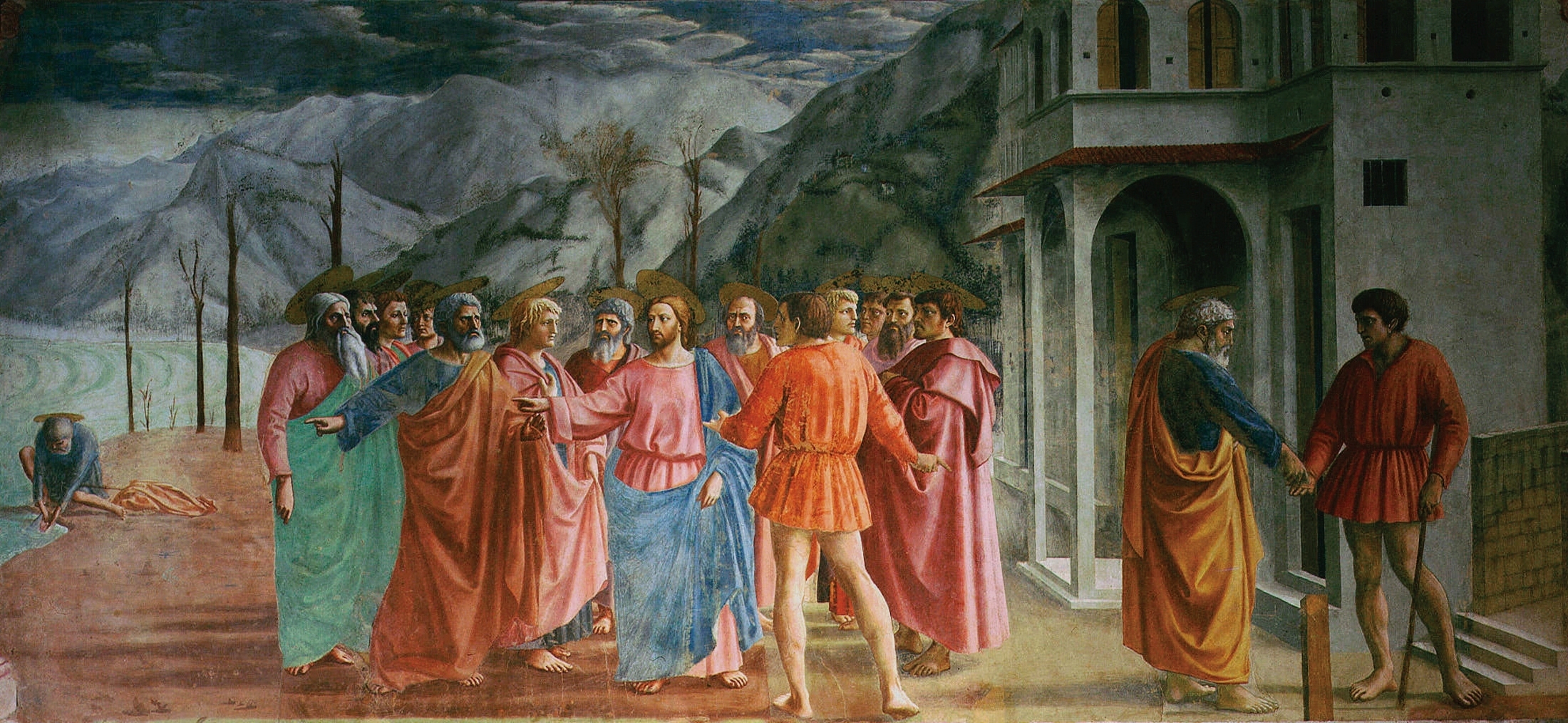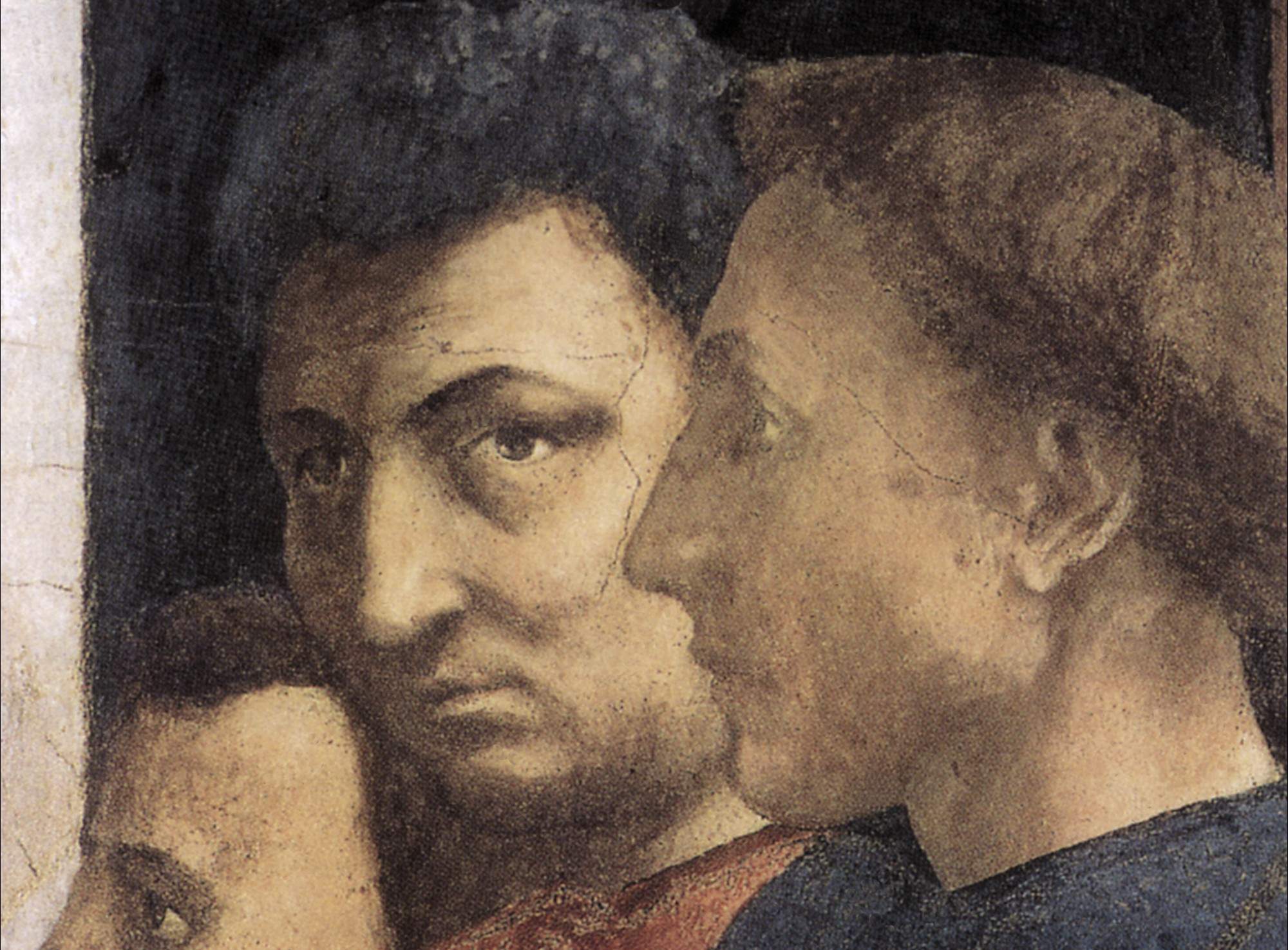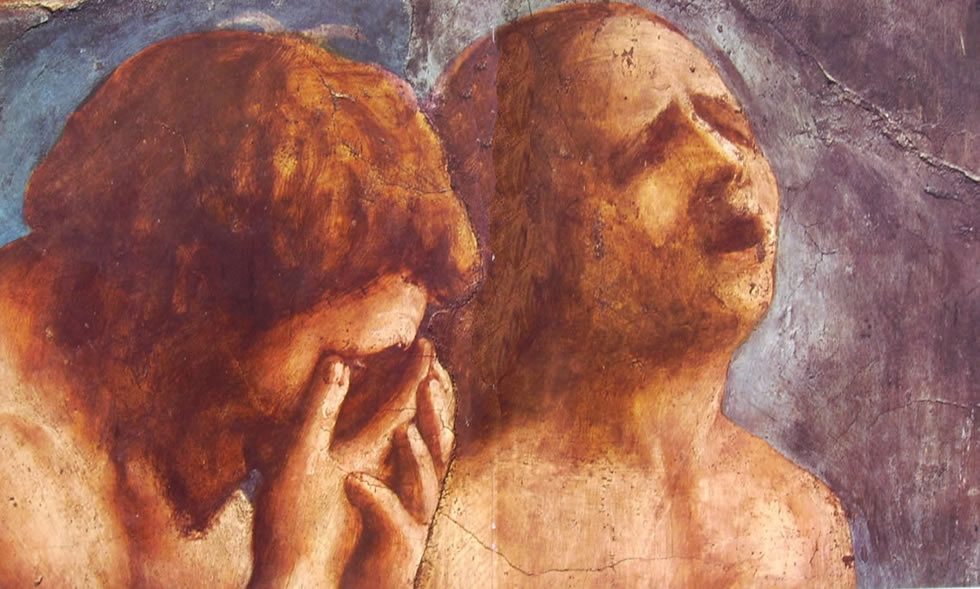Tommaso di Giovanni Cassai, better known as Masaccio (San Giovanni Valdarno, 1401- Rome, 1428), arrives very young in Florence and enters the circle of his compatriot Masolino da Panicale, of whom was cooperator more than a student in an equal relationship between two already mature painters, even if of different ages. The masters on which Masaccio is formed are Giotto, Brunelleschi, Donatello and Nanni di Banco.
The painter deeply understands the value of the new man, his being inside the society, the meaning of Brunelleschi perspective, the sense of intense humanity of Donatello.
Masaccio’s artistic career, although very brief, was strongly innovative: with Masaccio the painting started a new course. Man becomes in the work of Masaccio an authentic individual, with passions, feelings, worldly emotions, anchored to the physicality and concreteness of reality. The figures of his painting are set and built according to the rules of perspective representation, humanity protagonist of his being in the world, putting special emphasis on the incidence of light and shadows.
The “Triptych of San Giovenale” in Cascia di Reggello, is dated 1422 and is the most ancient work of art of Masaccio that we possess, it has a sure perspective system empty of decorations but full of moral contents. From the cooperation with Masolino borns the “Panel of S.Anna with the Virgin, the Child and the angels”, about 1424, in which two styles, two different times, Middle Ages and Renaissance, are compared. Following to this we have the Polyptych of Pisa, in which images are cleaned of every minimal decoration and totally concentrated on the represented event.
Masaccio’s masterpiece s the fresco cycle in the Brancacci Chapel in the Church of Carmine in Florence, where he worked with Masolino, but now the Masaccio pictorial identity is strong enough to emerge deep in the cycle. Masaccio mysteriously died at the age of 26.





